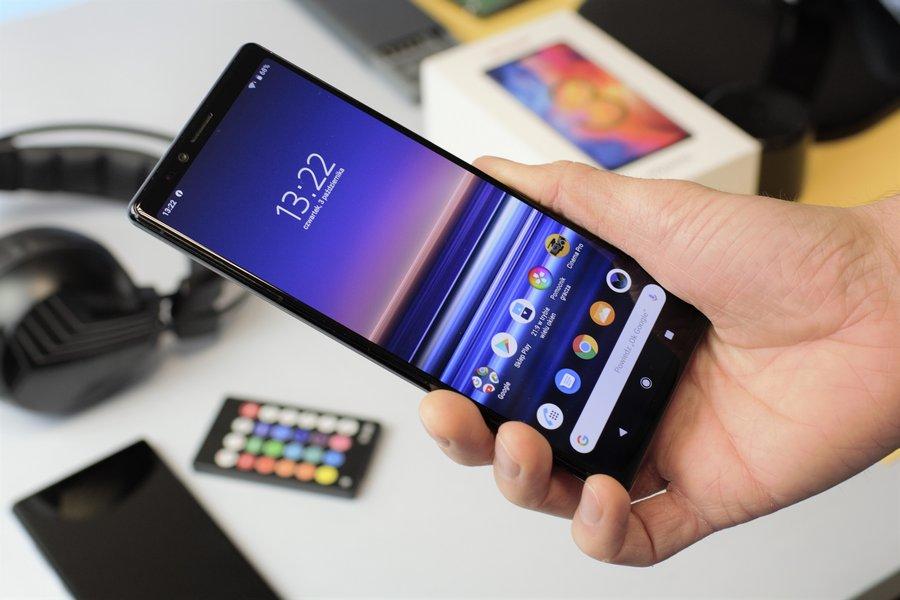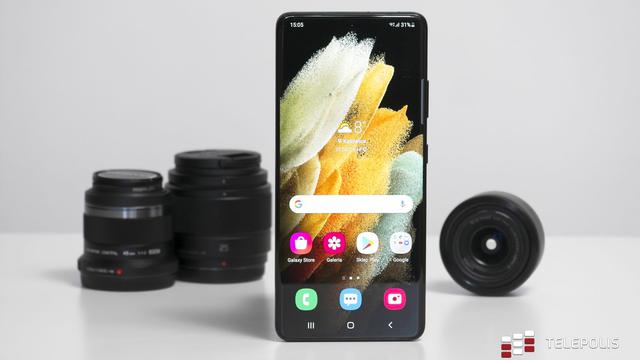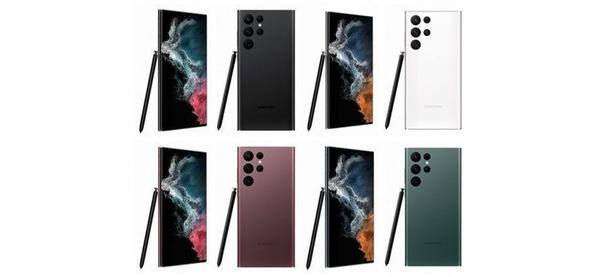A smartphone with an OLED 4K HDR CinemaWide screen. Sony Xperia 1 is a flagship in the full sense of the word - both in terms of the components used, the screen, but also the price itself, because it is one of the most expensive devices in its segment. Large display, unusual proportions (21:9), triple camera. Is it worth paying attention to the top model of the Japanese giant when looking for a flagship device?
Contents of the box and first impressions
Sony's flagship comes in a rather large, elegant package, and apart from the device itself, we will find only a charger, a USB C-jack 3.5 mm adapter and "documentation". There was even a basic silicone case missing. A pity, because the back of the device is of course glass that likes to collect scratches. Sony definitely does not try to fit into the current trends of gradient backs or maximum removal of frames. In its flagship, it offers unusual proportions that distinguish this product from the competition. At the same time, despite the really good workmanship, I can't say that it is a visually attractive phone. The smartphone itself is really long (as much as 167 mm) but at the same time quite narrow. As for holding and using the device, I have very mixed feelings. On the one hand, it can be easily covered due to the aforementioned width, on the other hand, the glass housing makes it really slippery. Added to this is the location of the fingerprint reader on the side edge, between the power switch and the volume control buttons. I have been unable to unlock the phone with my fingerprint many times. Face unlocking works properly during the day, but in poor lighting I had to use a predetermined pattern and actually I have not used this method so often in any smartphone so far. I think that in this case Sony could have decided to place the reader in the screen, as is the case with most of this year's flagships, especially because we are dealing with an OLED screen. Xperia 1 and Samsung Galaxy Note 10+Display
The flagship of the Japanese manufacturer is equipped with a 6.5-inch OLED 4K HDR CinemaWide display with a resolution of 3840x1644, which gives a phenomenal density result of 643 pixels per target. Xperia 1 has an unusual screen ratio - 21: 9. This is certainly a rare phenomenon on the market that some users may like. At the same time, such proportions may simply not appeal to everyone and it is with this group that I identify myself. On the one hand, watching movies or playing games on it is really pleasant. On the other hand, I came across applications or games that took up only ¾ of the display, which meant that I had to stare at empty, black space on the rest of the screen. As for colors, screen brightness, you can't say a bad word. Xperia 1, as befits a flagship, looks great here and in this respect I think it will also please the eye of a more demanding user. It is a pity that the manufacturer does not allow you to set a dark theme from the settings level, which in Amoled screens allows you to reduce energy consumption. Xperia 1 with active display modePerformance and software
The device from Sony is also a true flagship when it comes to components. So we have Snapdragon 855, 6 GB RAM (LPDDR4x) and 128 GB ROM (UFS 2.1). We can expand the memory thanks to the hybrid SIM card slot. Specifications: In terms of performance, the Xperia 1 is the top shelf. It instantly opens apps and loads games. I am not exaggerating by saying that there is currently no title in the Play Store that this smartphone will not "pull" on full details. Unfortunately, despite the positive experience in terms of liquidity, during the tests it happened twice that I had to restart the device. When taking several photos, although the last one was visible in the gallery thumbnail, after going to the application, the photos taken did not save. Only after restarting the phone, the photos taken were correctly saved in the memory, while those taken before the restart were no longer visible anywhere. I suspect it's a system error, but I couldn't find any information on how to fix it. Apart from the aforementioned problem, I have no objections to the optimization of the system and its operation. The overlay from Sony, or rather just a few additions to pure Android, is intuitive and pleasant to use. However, I missed the screen gestures known from MIUI or EMUI. The "Side sensor" function is quite an original solution. According to the manufacturer, the sensor on the side makes it easier to use the device. In practice, tapping on the edge is not always convenient and I personally did not like this solution. In Sony, there is only an icon in the middle, with which we will get to the menu of all applications, return to the main screen, or call the Google assistant. You can also enable the classic Android touch button layout in the settings. Xperia 1 Benchmark ResultsConnectivity and Sound
The communication facilities in the Sony device are at the highest level. There is bluetooth 5.0, of course dual-band WiFi, NFC or USB type C with OTG support. Unfortunately, there was no 3.5 mm jack input, which personally does not bother me,however, it is still considered by many to be a big asset. As for the sound itself, it is again a big plus for Sony, which equipped the Xperia 1 with stereo speakers (one on the bottom edge, the other by the speaker for calls). Praise is due not only for the fact of the stereo speakers but also for the sound quality itself, which is really clear. Similarly, the bass itself is clear and sounds very good.Battery
The device is powered by a 3330 mAh lithium-polymer battery. Unfortunately, the battery is one of the weakest points of the Xperia 1. We have a large display with a huge resolution, which definitely translates into quite short battery life. During tests with LTE turned on and a constant bluetooth connection with the Mi Band, I only got about 4 hours of screen on during the day. A weaker battery is even more noticeable when using navigation. In this aspect, the flagship from Sony is definitely worse than the Huawei P30 Pro, which offers up to 4200 mAh. Fortunately, in emergency situations, when we will not have access to the charger quickly, we can activate the STAMINA mode, which will significantly extend the battery life.Camera
Xperia 1 offers the user as many as three cameras on the back: the main sensor with a resolution of 12 Mpx and f/1.6 aperture, a 12 Mpx wide-angle sensor with f/2.4 aperture and a telephoto module also with a resolution of 12 megapixels with f/aperture /2.4. On the front, we find an 8-megapixel eyelet. Sony is one of the leaders among photographic solutions and the described model can actually become one of its flagships in the field of mobile photography. The photos are really good and it's nice, because the previous models of the Japanese giant differed slightly from the photos from the top Samsung and Huawei. Actually, I consider each of the rear cameras very good - both standard photos and the bokeh effect, which "draws out" the first one very well plan and peaks in depth and finally a wide-angle camera that offers a satisfying level of detail. When it comes to night photos, it's not bad, but here Sony definitely gives way to Samsung S10 or Huawei P30 Pro. The front camera is good and basically enough, because you can't have great expectations for the front camera. I also have no objections to the video, which is correct, and thanks to the optical stabilization, the image is smooth and pleasant to the eye. You can judge the photographic capabilities of this model yourself: The set of photos in the original resolution can be found on our Google drive.Summary
Sony Xperia 1 is an incredibly fast smartphone that takes good photos, like almost no other phone is suitable for watching movies or playing any titles from the Play Store. The flagship from Japan will certainly not disappoint us in everyday use, and the communication facilities will also provide comfort to more demanding users. At the same time, however, the smartphone does not impress with its appearance, it has a poor fingerprint reader in my opinion and is certainly not a compact device. Certainly many will like it because of the listed strengths, but the competition is really strong at its price. After all, we have Samsung or Huawei with their top models, but we will also get OnePlus 7 Pro cheaper. Pros:+ great 4K HDR OLED screen+ stereo speakers+ expandable memory+ versatile camera+ good performance Cons:- poor battery- no wireless charging- average design- button placementDon't miss similar news → Follow us on Google News. Share: RELATED TOPICS Test Motorola Moto G200 5G.


